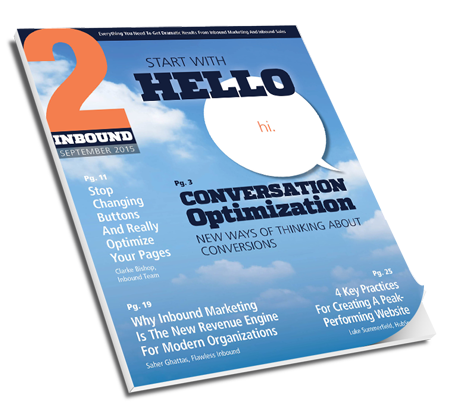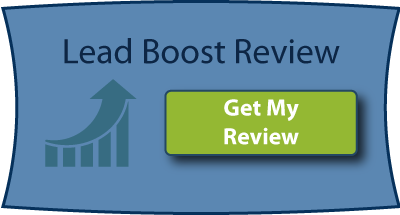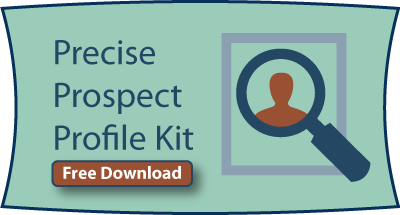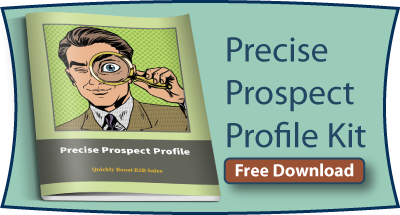What should leads cost?
Lead cost depends on your market and on what your company has in place. There’s no definitive answer. Still, I know you’re looking for some guidance, so let’s consider some scenarios.

Trade Show Lead Cost
For most companies, an online lead costs less than a lead from traditional offline marketing. To see why, let’s look at trade shows for comparison.
I’ve seen estimates that it can cost $10K for each person you bring to a trade show. An average sales rep makes at least $1,600 per week. Add another $1,500 for travel to the show and entertainment. If you send some senior people, it’s likely the costs are even higher. Then, you’ve got the cost of the booth, booth transportation, collateral materials, and the show itself. $6K per participant seems like a conservative estimate, and the cost may well be closer to $10K.
Let’s say four people go to the show, and your total cost is $24K, and you get 60 leads from your booth. That’s a cost of $400 per lead—before adjusting for the visitors that just wanted a free t-shirt or coffee mug.
Trade shows can be fun, and there may be other reasons to attend. Still, they have a number of important disadvantages:
-
Many companies fail to follow-up effectively on trade show leads. This is just a waste.
-
Trade shows happen infrequently. What if a prospect needs to buy one month after the show? They’re not going to wait eleven months.
-
Going to a show and coming back can disrupt your business rhythm.
Google AdWords Lead Cost
For digital lead generation, there’s a quick way to estimate the cost. Use Google’s keyword planner. For this scenario, assume you are an accountant looking for more business.
For $9, Google will sell you a click from a person who searched Google for “accountant.” Below is an example of the data you can get directly from Google’s keyword planner.

It costs $9 to get a person to your website, but will they become a lead? You'll need to invest in a good website page with a good offer. If so, 10% might respond and become leads.
- 100 clicks x $9 = $900
- $900 to develop or maintain your offer and website page
- $500 to manage a simple AdWords campaign
A total of $2,300 for 10 leads, or $230 per lead.
Of course, some of these are fixed or partially fixed costs. So, you might be able to drive down your cost per lead by buying more clicks.
At least it’s less expensive than our trade show scenario. There was a time you could get inexpensive clicks from Google, but today, more and more companies use Google AdWords. The competition has run up the cost, and it looks like this tactic will continue to get more expensive.
The good thing is that searchers on Google are actively looking for help or a solution to their problems. This means they are very qualified prospects. And Google AdWords can be a very useful way to discover search terms that prospects are using in Google.
Inbound Out Marketing Lead Investment
Trade shows, AdWords, and many other types of traditional marketing and advertising are time-based. You go to a trade show for a week. You run AdWords or other advertising for a month. You can turn these on or off and your results will go up or down.
Inbound Out Marketing is a strategy. You have some ability to adjust the ongoing costs, but you can’t dabble without destroying its effectiveness.
A minimum investment is $6K per month. Depending on your growth goals and situation, you may want to do more inbound marketing, more targeted outreach, or both. In either case, you have to regularly publish useful information that your prospects value.
A good blog post costs $200—more for specialized technical topics. I know, you’ve heard about somebody who bought blog posts off eLance for $20. But were they any good? I’ve tried a lot of these “writers,” and I can confidently tell you that it doesn’t work.
It’s not easy to write well enough to impress your customers. 3 posts per week is a good target. That’s $2,400 per month.
Blog posts will attract readers, but you want leads. Premium content along with a landing page form is what converts readers to leads. Premium content means longer pieces like special reports, infographics, training courses, and videos. For good premium content, typical costs are $2K and up. Plan to create a premium offer every two months, so budget for $1K per month.
You’ll want to do good follow-up with leads and customers, so plan on $1K per month to write and manage the emails.
Add $1K per month for a marketing system like HubSpot. That leaves a few hundred dollars for website maintenance and other special activities in our $6K per month budget.
At 2,000 monthly visitors per month, let’s say 3% of these visitors provide their contact information. You get 60 leads from 2,000 visitors at a cost of $100 per lead.
If you’re starting from scratch, it may take several months to ramp up to 2,000 visitors. This disadvantage is offset by the fact that inbound out marketing builds over time. Each month you’re adding new prospects to your database. As you keep going, expect your monthly visits will grow too.
That's the big benefit of Inbound Out marketing. Keep going and your traffic will keep growing. This drives down your lead investment over time.
Summary
Each of these scenarios depends heavily on your market, your competitors, and what your company already has in place. Still, most companies should consider inbound out marketing. Traditional marketing and advertising is becoming more difficult each year. Don’t risk letting your competitors get the jump on you. It’s both difficult and more expensive to catch up.
Use our Lead Estimator to calculate the expected investment for your specific situation.
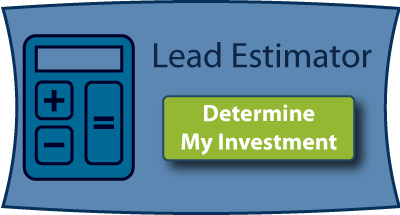
Takeaways
-
Most companies will lower their cost and improve their positioning by using inbound out marketing.
-
The Internet has changed the buying process forever. If you are not doing inbound out marketing, there’s a big risk your company will be left behind.
-
Lead cost will vary for each market and each company. There is no single answer on what a lead should cost.

